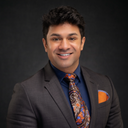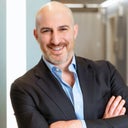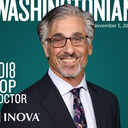Posted underRhinoplasty q&a
Passionate817004Jan 9, 2023
Hi I did a consultation for rhinoplasty. I really want to get this done , but I'm a little on the fence considering that the surgeon I consulted with told me he may have to harvest cartilage from my rib considering that I had a septoplasty turbinate reduction surgery a few years ago. My question is this necessary and is this the only way to obtain a rhinoplasty, I not comfortable with this and would like to know what are my options. your response is appreciated.
Answers (18)
From board-certified doctors and trusted medical professionals
Dr. Marc Polacco, MD

Dr. Marc Polacco, MD
Board Certified Facial Plastic Surgeon
Answer
Dr. Nima Shemirani, MD

Dr. Nima Shemirani, MD
Board Certified Facial Plastic Surgeon
Answer
Dr. Mark K. Markarian, MD, MSPH, FACS

Dr. Mark K. Markarian, MD, MSPH, FACS
Board Certified Plastic Surgeon
Answer
Dr. David Parizh, DO

Dr. David Parizh, DO
Board Certified Plastic Surgeon
Answer
Dr. Lucian Ion, FRCS

Dr. Lucian Ion, FRCS
Specialist Registered Plastic Surgeon
Answer
Dr. Joshua D. Rosenberg, MD

Dr. Joshua D. Rosenberg, MD
Board Certified Facial Plastic Surgeon
Answer
Dr. Jeffrey Lisiecki, MD

Dr. Jeffrey Lisiecki, MD
Board Certified Plastic Surgeon
Answer
Dr. Philip S. Schoenfeld, MD, FACS

Dr. Philip S. Schoenfeld, MD, FACS
Board Certified Facial Plastic Surgeon
Answer
More Rhinoplasty Questions
See all Rhinoplasty Q&AWE SEND PRETTY
EMAILS
What’s trending? Who’s turning heads? Which TikTok myths need busting? We’ve got you. No fluff, no gatekeeping—just real talk. Get our free, unfiltered newsletter.

